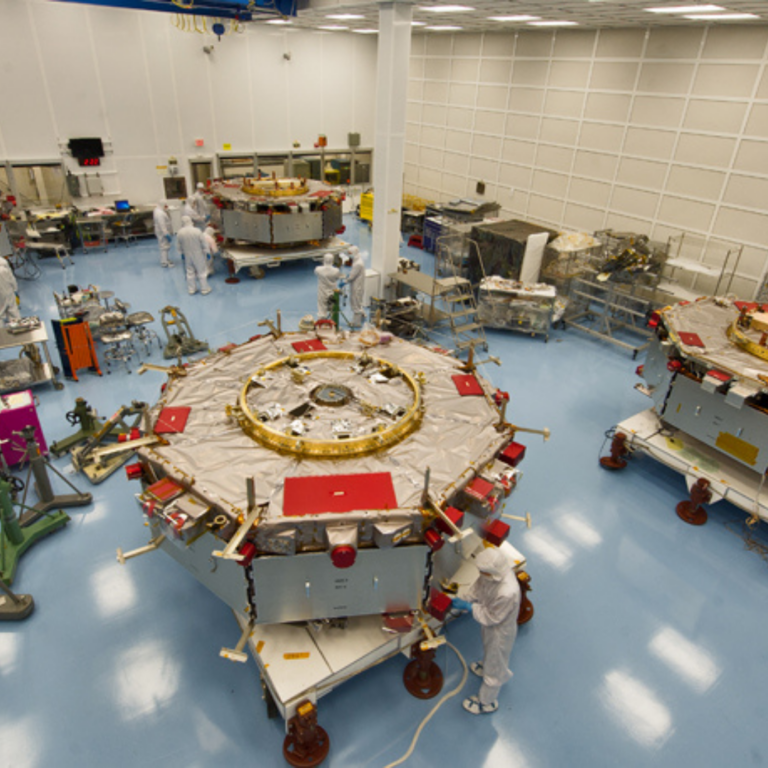MMS
Magnetospheric Multiscale
Constellation that investigates Earth's magnetosphere

The Magnetospheric Multiscale (MMS) mission is a Solar Terrestrial Probes Program mission within NASA’s Heliophysics Division. The MMS mission, consisting of four identically instrumented spacecraft, uses Earth’s magnetosphere as a laboratory to study magnetic reconnection, a fundamental plasma-physical process that taps the energy stored in a magnetic field and converts it—typically explosively—into heat and kinetic energy in the form of charged particle acceleration and large-scale flows of matter.
Mission Class:
Mission Status:
LASP Roles:
Science Target:
Mission Focus:
Primary Mission Site:

Launch date: March 12, 2015
Prime Mission: 2 years
Lead Institution: NASA Goddard Space Flight Center
Lead Funding Agency: NASA’s Heliophysics Division
Partners: Southwest Research Institute (SWRI), University of New Hampshire, Johns Hopkins University Applied Physics Laboratory (JHP/APL), Rice University, Austrian Academy of Sciences
LASP built several key components to the MMS FIELDS investigation instruments. This includes the door and preamplifier assemblies for the Spin-plane Double Probe (SDP) electric field instrument, the Axial Double Probe (ADP) electric field instrument including booms, sensors, and preamplifiers, and the Digital Signal Processor (DSP) electronics that support onboard capture and processing of the ADP, SDP, and Search Coil Magnetometer (SCM) electric and magnetic field measurements.
LASP serves as the mission Science Operations Center (SOC), which includes science operations planning, instrument command sequence development, and science analysis support
Science data for all MMS measurements is hosted at LASP and centrally disseminated to the science community.
Data is located here:
https://lasp.colorado.edu/mms/sdc/public/
